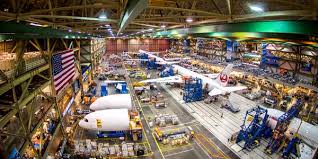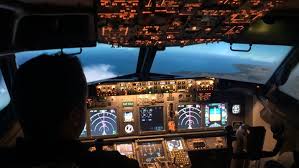Boeing’s Culture of Neglect and Disregard of Safety: The House Transportation Committee Report Findings (Part II of II)

Boeing’s culture and safety performance continues to undermine its ability to move forward and regain trust from regulators, the aviation industry and the flying public.
Boeing has to undergo transformative change. All indications of reform are sparse and Boeing appears to be moving slowly but not so effectively to implement real and substantial reforms. Boeing faces significant challenges to the core of its culture and its operations.
The House Transportation Committee Report is a devastating document that indicts both Boeing and the FAA. This posting focuses on Boeing’s corporate culture and its blatant failure to adhere to safety as a foundation for its business.
The Committee Report identifies five central themes that affected the design, development and certification of the 737 MAX.
Boeing Production Pressures: Boeing was under severe financial pressure to compete with Airbus new A320 aircraft. These pressures included not only completing the design and manufacture of the MAX 737 but cutting costs and preventing any slowing of the 737 MAX production schedule. In numerous instances cited by the Committee Report, Boeing sacrificed safety to maintain production schedules and cut expenses.
In one poignant example, in June 2018, Ed Pierson, a senior Boeing plant supervisor at a 737 MAX production faculty, emailed the 737 General Manager requesting a meeting concerning “safety concerns.” Mr. Pierson raised numerous issues about production and schedule pressures that were impacting quality control and safety issues. In a prophetic comment, Mr. Pierson stated that he was “hesitant about putting my family on a Boeing airplane.”

Five weeks later, Mr. Campbell finally met with Mr. Pierson to discuss his concerns. Mr. Pierson stated that in the military they would halt production of the 737 MAX in response to the safety problems identified on the manufacturing floor. Mr. Campbell chastised Mr. Pierson’s concerns by reminding him that the “military is not a profit-making organization.” Rather than responding to Mr. Pierson’s safety concerns, Boeing ramped up production and took no steps to address Mr. Pierson’s concerns.
Three months later, the Lion Air flight in Indonesia crashed.
Faulty Design and Performance Assumptions: Boeing made several faulty assumptions about critical technologies, most significantly on the Maneuvering Characteristics Augmentation System or MCAS. Based on this faulty analysis, Boeing permitted MCAS – software designed to automatically push the airplane’s nose down in certain conditions – to activate on input from a single angle of attack (AOA) sensor. Boeing also expected that pilots, who were unaware that the system existed, would be able to mitigate any potential malfunction.
Boeing also failed to classify MCAS as a safety-critical system, which would have affected greater FAA scrutiny during the FAA certification process.
Culture of Concealment: On several occasions, Boeing withheld crucial information from the FAA, its customers and 737 MAX pilots. This included concealing the very existence of MCAS from 737 MAX pilots and failing to provide adequate explanation for certain safety features. Boeing also failed to disclose internal test data concerning the operation of its MCAS system. Boeing not only failed to disclose critical safety information but continued to deliver MAX aircraft to its customers knowing that it failed to disclose this important safety information.

Boeing’s Influence Over the FAA’s Oversight Structure: The Committee Report details instances when FAA management overruled FAA staff determinations on safety issues at the urging and behest of Boeing officials. In these cases, FAA technical and safety experts determined that certain Boeing design approaches were unsafe and failed to comply with FAA regulations. Boeing was able to persuade FAA management to overrule the FAA staff safety concerns which ultimately compromised the integrity and independence of the FAA oversight and passenger safety.















